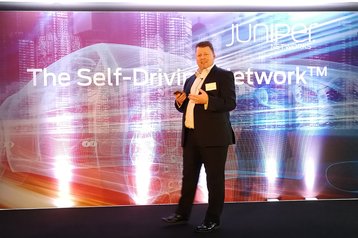Connectivity specialist Juniper Networks has launched the first three Juniper Bots – applications that automate common network configuration tasks and enhance the core functionality of software products like Contrail and AppFormix.
Contrail PeerBot was developed to simplify operation of Internet exchanges, Contrail TestBot – to automate design, testing and tune-up of networks, while AppFormix HealthBot applies machine learning to real-time analysis of the state of the network to simplify troubleshooting and maintenance.
The new products support Juniper’s vision of a ‘Self-Driving Network’ – a concept developed by its engineering CTO Kireeti Kompella, who wants to encourage data centers operated without human intervention.
Machine to machine
“Operating a network is one of the most resource-intensive IT functions within any enterprise, cloud or service provider organization. Whether it’s ongoing maintenance or moving workloads to the cloud or deploying new services, each step has traditionally required attention to detail and countless hours of planning and execution,” Sally Bament, vice president, service provider marketing, Juniper Networks.
“Juniper Bots bring us closer to our vision for The Self-Driving Network, one that requires less human intervention and the ability to focus on more strategic business initiatives. To move at the speed of business, network operators need to spend less time precisely managing manual network knobs and levers, and more time expressing intent.”
According to Juniper, complex programming languages that require skilled developers have previously been the only way to automate certain network functions. The company says that in its recent survey, 43 percent of respondents noted that the lack of internal education and skillsets prevents the adoption of network automation.
Juniper’s latest software products focus on ‘intent’ – the desired outcome of the operation, rather than its exact details. The goal is to enable intent (the “what”) to be expressed in natural language, with the software taking care of the changes to the network (the “how”).

